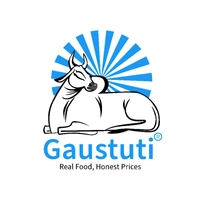Have you ever paused to wonder why real, natural, chemical-free food seems costlier than the food we find in supermarkets every day?
It’s not just about pricing. It’s about the systems behind the food we eat—the machinery, the labour, the subsidies, and the long-term consequences. Here's a breakdown of what makes industrial food cheap and natural food more expensive—and why the latter is the real investment.
1. Mass Production & Economies of Scale
Industrial agriculture operates on mechanization, chemical inputs, and fossil fuels. Large tracts of land are tilled, fertilized, and harvested using machines that reduce human labour, improve speed, and drive down costs.
Natural and organic farming, on the other hand, is labour-intensive. Tasks like preparing beds, composting, harvesting, and maintaining mulch are mostly done by hand. These practices regenerate the soil but demand more effort, time, and care.
2. Shrinking Farmer Families, Rising Labour Costs
In the past, extended families with 30–45 members would manage farms collectively, reducing the need for external labour. Farming was not just an occupation—it was a shared responsibility.
Today, nuclear families dominate. A natural farmer must hire external help, which is both costly and difficult—especially as rural youth move away from agriculture and policies offer subsidized alternatives that disincentivize manual work.
3. Government Subsidies Skew the System
Chemical fertilizers, hybrid seeds, electricity, and water are heavily subsidized for industrial agriculture. While this reduces costs for farmers, it also encourages overuse and abuse.
Subsidies rarely support regenerative practices. As a result, natural farmers bear the full cost of sustainable cultivation—with no shortcuts and no freebies.
Anything free or subsidized is more prone to overuse. The consequences? Depleted groundwater, eroded soil, and dying biodiversity.
4. Less Yield, More Nutrients
When a farmer transitions from chemical-based to natural farming, it can take up to 5 years to revive soil health and reach earlier levels of yield.
During this transition, produce is lower in quantity but richer in quality. Nutrient-dense food takes time, and the costs reflect that effort. Sadly, most consumers only see the price, not the process.
5. The Real Cost Isn’t on the Label
Industrial food may be cheaper upfront, but its hidden costs—to the soil, water, climate, and public health—are far greater.
When you pay more for natural or organic food, you’re not just buying produce—you’re supporting soil regeneration, fair labour, and ecological balance.
Visit, Listen, Understand
These reasons are just the beginning. I encourage individuals, families, and communities to visit farms, speak to natural farmers, and witness their struggles and values firsthand.
Let’s Choose Better Together
Community-based procurement, direct-from-farmer purchases, and supporting local regenerative farmers can create win-win ecosystems for both urban consumers and rural producers.
At Gaustuti, we believe in conscious choices, not mass consumption. Let’s nourish the soil, support our farmers, and build a better food system—one real bite at a time.


